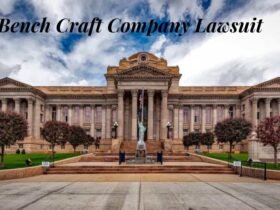Introduction
The White Oak Global Advisors lawsuit has become a focal point in the financial world, attracting considerable attention due to its complex nature and potential implications. White Oak Global Advisors, a prominent investment firm, has built a reputation for managing and advising on various investment funds. However, the lawsuit against them has cast a shadow over their operations, raising questions about their practices and governance.
Origins of the Lawsuit
White Oak Global Advisors was sued by TCA Global Credit Master Fund in 2019, marking the beginning of a legal battle that would reveal intricate details about financial management and fiduciary duties. The lawsuit alleges that White Oak engaged in improper conduct related to the management and operations of certain investment funds. Specifically, the plaintiffs claim that White Oak mismanaged funds failed to act in the best interests of investors, and breached their fiduciary duty.
Background of the Case
The lawsuit’s origins can be traced back to the relationship between White Oak and TCA Global Credit Master Fund. TCA, an investment fund, relied on White Oak for advisory services and fund management. Over time, discrepancies and concerns about the handling of investments and financial reporting led to escalating tensions between the two entities. These concerns culminated in the lawsuit, with TCA seeking redress for the alleged financial mismanagement and misconduct by White Oak.
Core Issues
The lawsuit’s core issues revolve around allegations of financial misconduct and breaches of fiduciary duty. TCA claims White Oak failed to manage funds properly, leading to economic losses and undermining investor confidence. The lawsuit highlights instances where White Oak allegedly engaged in self-dealing, prioritized its interests over those of investors, and failed to disclose critical information. These allegations raise serious questions about investment advisors’ ethical and legal obligations and the safeguards in place to protect investors.
Key Developments
Since the lawsuit was filed, several key developments have taken place. Initial court proceedings involved both parties presenting their arguments and evidence. While denying the allegations, White Oak has faced scrutiny over its financial practices and management decisions. The case has seen multiple motions and hearings, each seeking to strengthen its position. Key moments include:
- Court rulings on procedural matters.
- The submission of expert testimonies.
- The presentation of financial records.
Court Rulings and Hearings
One significant development was a court ruling that allowed the lawsuit to proceed despite White Oak’s attempts to dismiss it. This ruling underscored the seriousness of the allegations and the need for a thorough examination of the claims. Subsequent hearings focused on the financial transactions and management decisions at the heart of the dispute. The presentation of financial records and internal communications provided insights into White Oak’s operations and approach to fund management.
Expert Opinions and Analysis
Expert opinions have played a crucial role in shaping the case. Financial and legal experts have weighed in on White Oak’s practices, offering analyses of the alleged misconduct and its impact on investors. These insights have provided a broader perspective on the responsibilities of investment advisors and the importance of transparency and accountability in financial management. The expert testimonies have also highlighted the complexities of the investment industry and the challenges in navigating legal and ethical obligations.
Implications for the Investment Industry
As the lawsuit progresses, its implications for the investment industry become increasingly apparent. The case has the potential to influence regulatory standards and practices, prompting investment firms to reevaluate their governance structures and compliance measures. The scrutiny of White Oak’s practices could lead to broader discussions about the role of fiduciary duty and the mechanisms to protect investors from potential misconduct.
Current Status and Potential Outcomes
The lawsuit’s current status indicates ongoing legal proceedings, with both parties continuing to present their arguments and evidence. The outcome remains uncertain, but the case has already significantly impacted White Oak’s reputation and operations. Investors and industry observers closely monitor the developments, anticipating potential changes in the regulatory landscape and the practices of investment advisors.
Conclusion
In conclusion, the White Oak Global Advisors lawsuit sheds light on critical issues within the investment industry, particularly regarding financial management and fiduciary duty. The allegations of misconduct and the ensuing legal battle have revealed the complexities of investment practices and the importance of transparency and accountability. As the case unfolds, its implications for the industry and regulatory standards will continue to be a subject of interest and analysis.
The lawsuit reminds investment advisors of their responsibilities and the need for robust mechanisms to protect investors. It underscores the importance of ethical conduct and the potential consequences of failing to uphold fiduciary duties. As the legal proceedings continue, the case will remain a focal point for discussions about the future of investment practices and the safeguards necessary to maintain investor confidence.
Also Read Interesting articles at Newzflix













